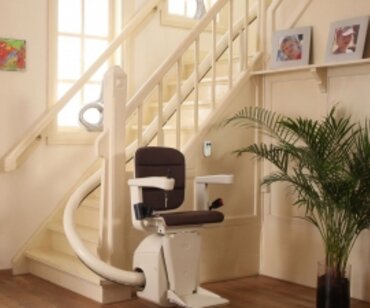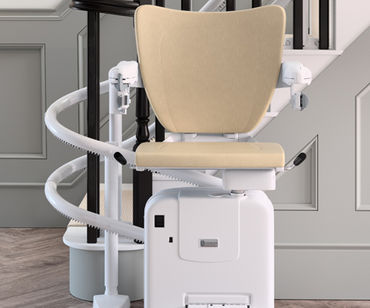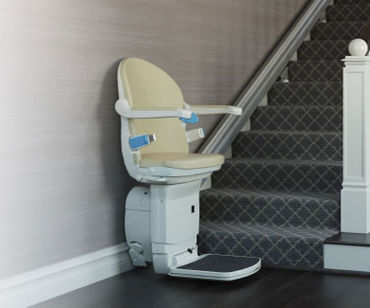Space-saving ideas for smaller homes

When you live in a flat or a small house, it can be difficult to organise your belongings and keep everything organised and clutter-free.
However, it is possible to maintain a tidy home even if you have limited space as we explore in this article. We spoke to various bloggers to get their advice on how to maximise the space in your home without compromising on style.
Utilise wall space with shelving solutions
Keeping items off floors, tables and countertops is one way to help your space feel bigger. It is one way Victoria from So Victoria makes the most of the space she has in her home: “Clearing floor space is the key to creating the illusion of a larger, more spacious homes. With limited space for built-in or freestanding storage, this can be a tricky one.
“Wall shelves are always my go-to solution as it keeps the floor clear. There is not a single room that doesn’t benefit from a few shelves of extra storage space. Use any available alcoves to create a built-in look or use the full expanse of wall to create statement eye-catching displays through thoughtful arrangements. Peg-rail shelves can be added to any room for Scandinavian-inspired storage.”
Maximise cupboard space with under-shelf storage
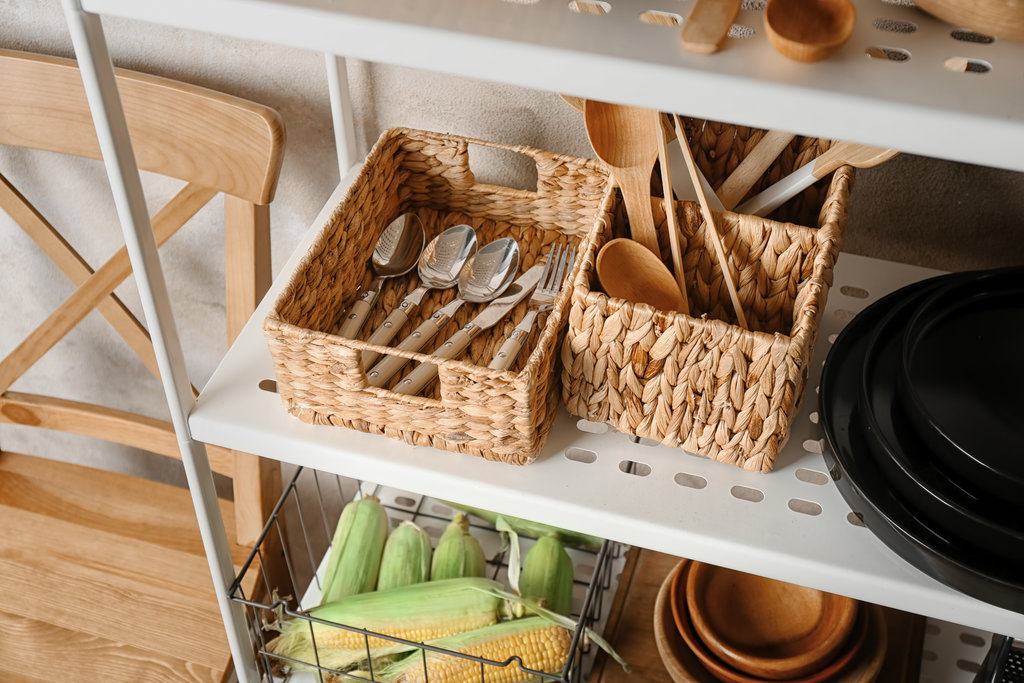
There are plenty of ways to increase storage or workspace in any room of the house, and under-shelf storage is just one cabinetry solution to consider.
Shelving units are a great way to display decorative pieces as well as essentials, however, it is worth utilising the space underneath shelves to give yourself even more storage, as Abbey Louisa Rose explains: “Under-shelf storage baskets are my saviour! Since I live in a studio flat, I have very limited cupboard space in my kitchen, but by purchasing a couple of under-shelf storage baskets and clipping them on to existing shelves, I've doubled the amount of space available to me. These aren't suitable for heavy items such as mugs or crockery, but they're ideal for keeping things like rolls of foil, boxes of teabags and jars of seasoning in a convenient, in an easy-to-reach place.”
Abbey went on to explain that her top tip for decluttering is to avoid taking on too much at once: “By setting small, manageable goals such as cleaning out the bathroom cupboard or sorting your ‘winter woollies’, you’ll feel motivated when you achieve them which will encourage you to do more!
“Working on decluttering with a friend always helps me too. This doesn’t necessarily mean inviting them around to your house for a tidying party (although that could be fun!), it can just mean that you both choose to set an afternoon aside for decluttering your own homes and keep each other up to date with your progress. You’ll both be smashing your tidying goals in no time.”
Victoria also uses baskets as well as Kilner jars to keep items organised: “Keep your clutter stylish through clever storage. Decant kitchen ingredients into Kilner jars, use baskets to disguise unsightly bits and bobs and don’t forget to make a feature of your wall shelves with lights and candles too. Also, disguising household clutter will create a more serene feel to your rooms.”
Buy furniture with built-in storage
Choosing furniture with built-in storage solutions is another way to help maximise the space in your home.
Suzanne from Chicken Ruby says that organisation is the key to help make the most of the space you have, and buying furniture with built-in storage is just one way to help achieve this: “You can store winter clothes under the bed and swap them around with summer clothes as the seasons change to save space in the wardrobe. Buy furniture that provides storage solutions, such as a sofa bed or a bed that is raised off the floor so you can store items under it. You can also use over-the-door hangers and radiator racks for drying clothes if you don't have outdoor space.”
Suzanne’s top tip for helping to keep your home clutter-free is to think about how much space an item takes up and then ask yourself how often you actually use it: “It might be nice to have a waffle maker, but if it hasn’t been used for six months, why keep it? When I declutter I start by removing items from various rooms that I haven't used for a while then pack them in a box. That box sits by the front door or under the bed for up to six months, if during that time I haven't had to go looking for anything in there, I donate it to a charity shop without even opening it again.”
Store unused clothes in vacuum storage bags
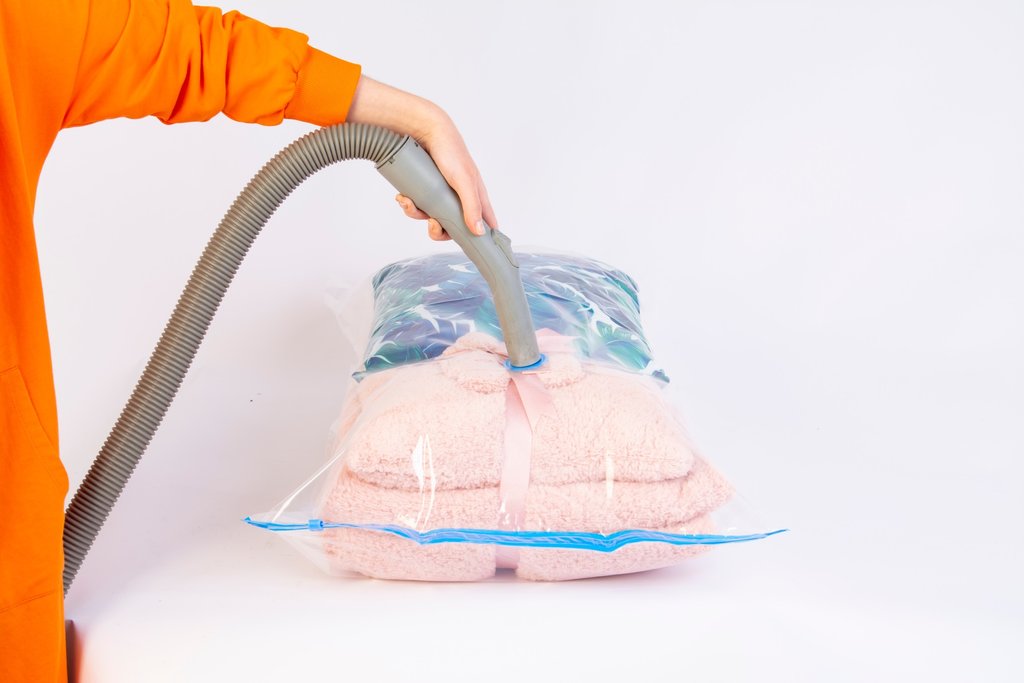
Bedding, towels and out-of-season clothing can take up a lot of room in your wardrobe or drawers, but vacuum storage bags can help solve this issue.
Vacuum storage bags let you pack these sorts of bulky items away to help you gain back some extra space. You place your items inside the bag and extract the air using a vacuum cleaner which flattens the bundle and makes it more compact as Olivia from Dungarees and Donuts explains: “When space is limited, use vacuum storage bags, especially if you're someone who struggles to part with clothes. During times when I've had smaller spaces to live, I'll conceal my clothes season by season and get them out during the times they're needed. It's amazing how much space they save.”
Emily Aagaard also suggests using vacuum storage bags to decompress large items: “Vacuum bags are great for reducing and storing away extra bedding, towels, cushions, and other materials that take up lots of space. You can save lots of space by only storing clothes for the current season and all of your out-of-season clothes can go in a vacuum bag and be hidden away.”
Think creatively when it comes to storage
When trying to find extra space in your home, it’s worth taking an extra look to see if there are storage opportunities in places you may not have initially thought about.
“Another tip for making the most of limited space is to utilise those small spaces created by your furniture,” says Emily. “If you've got space underneath your bed, invest in an under-bed drawer system to store extra clothes, vacuum bags, or blankets. If you have a desk, head to Ikea and grab a drawer unit to go underneath. No matter what space you have, there is a storage solution to help you out.”
Olivia told us that she utilises the space behind doors: “Hooks on the back of the door can have so many purposes. They're great for bags and coats but they're also great to hang your washing basket on, which saves having it on the floor taking up valuable space.”
Olivia further explained that the task of decluttering can be difficult, especially when the items are sentimental: “Tackling one area at a time can be a great way to start because if you attempt to do a whole room at once it becomes overwhelming. Even if you start one day on your books and manage to donate a few of them, it's still a step in the right direction. Having a clear out with a friend or a family member who will be honest with you is always a bonus, as they can usually help you reason with yourself.”
Consider space-saving mobility aids
One of the reasons people are hesitant about having mobility aids in the home is because they are concerned they will take up too much room. However, it is possible to have a mobility aid such as a stairlift fitted in your home even if space is tight. No matter if you have narrow doorways or an irregularly shaped staircase, Perch stairlifts need less room than the equivalent standard models because there is no large seat extending out in front of the track. Instead, you can simply ‘perch’ on the stairlift and still feel safe and secure on the equipment thanks to the seatbelt which keeps you secure during your ascent or descent on your staircase.
Perch stairlifts are ideal for narrow staircases because they provide more clearance and are a perfect solution for people who find sitting and rising uncomfortable.
Small homes should feel cosy, not cluttered, and by following some of these simple tips, you can help make a small room feel spacious with space-saving solutions.

